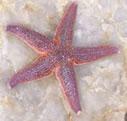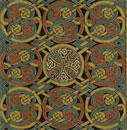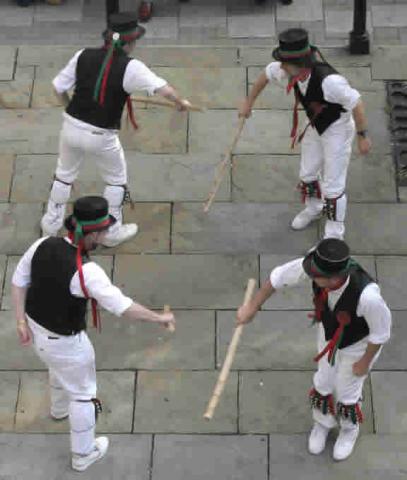Dancing with Maths
What have the following got in common?
- A snowflake
- A starfish
- A butterfly
They all have symmetry.
Symmetry is the basis of all patterns in art, music, bell ringing, knitting, dancing, crystals, elementary particles and nature.
| Reflection | Rotation | Translation |
Image

|
Image

|
Image

|
Something is said to be symmetric if it is not changed by one or more of these operations (reflection, rotation or translation).
Lots of art is based on symmetry, here is a very old example:

Perhaps you can look for pictures that make use of symmetry.
Squares
A square is symmetric. How many symmetries does it have?
A square will look the same under any combination of these symmetries but if we label the corners of the square and apply rotations and reflections we end up with "different" squares. Here are four examples (I have named them 'a', 'b', 'c' and 'd'.
| Rotation | Image

|
Image
|
Image

|
a |
| Reflection | Image

|
Image
|
Image

|
b |
| Reflection | Image

|
Image
|
Image

|
c |
| Reflection | Image

|
Image
|
Image

|
d |
The simplest symmetry we can have is the"do nothing "symmetry which we shall call 'e'.
|
Image

|
Image
|
Image

|
|
|
We call this symmetry
|
e |
||
We can combine these symmetries to get new ones.
So, for example:
a |
A rotation of 90 degrees |
aa |
A rotation of 180 degrees |
aaa |
A rotation of 270 degrees |
aaaa |
A rotation of 360 degrees = e |
You can also combine reflections with themselves:
bb |
= ? |
cc |
= ? |
dd |
= ? |
Answers are at the end of this article.
We have looked at combining rotations and combining reflections but what happens if we combine a rotation with a reflection? Let's look.
Reflection and rotation: ba = ?

Reflection and rotation ba = ?
So - how about ab?

And how about two reflections? bc = ?

Answers are at the end of the article.
Here are some other combinations you might like to check for yourself:
cb = aaa |
|
db = abb = ae = a |
By now you might be asking yourself:
"What has all this got to do with dancing?".
Well let me explain...
My name is Chris and fortunately I have three friends called Andrew, Bryony and Daphne (that makes A, B, C and D) who all like dancing.

We make ABCD - four corners of a square. You might already be seeing the connection! If not, here's a hint:

Key Fact: the symmetries of the square correspond to different dance moves.
|
Reflection
|
Image

|
Image
|
Image

|
b
|
|
Dance move |
ABCD | Image
|
ACBD |
This dance move is called an "inner-twiddle " or "dos-e-dos "
|
Reflection
|
Image

|
Image
|
Image

|
c
|
|
Dance
move
|
ABCD | Image
|
BADC |
This dance move is called an "outer-twiddle " or "Swing "
Now for the clever bit:
bc =a |
Did you remember this?
|
|
Therefore
|
bc b c bc bc = aaaa = e |
And this coresponds to a dance called a "Reel of Fou r " or a "Hey ".
Let's do the dance
| ABCD | ||
| b | Image
|
|
| ACBD | ||
| c | Image
|
|
| CADB | ||
| b | Image
|
|
| CDAB | ||
| c | Image
|
|
| DCBA | ||
| b | Image
|
|
| DBCA | ||
| c | Image
|
|
| BDAC | ||
| b | Image
|
|
| BADC | ||
| c | Image
|
|
| ABCD |
Now find three friends and try it!
Another dance
|
ABCD
|
Image
|
CDAB
|
d b = a |
|
Therefore
|
d b d b d b d b = aaaa = e |
| ABCD | ||
| d | Image
|
|
| CDAB | ||
| b | Image
|
|
| CADB | ||
| d | Image
|
|
| DBCA | ||
| b | Image
|
|
| DCBA | ||
| d | Image
|
|
| BADC | ||
| b | Image
|
|
| BDAC | ||
| d | Image
|
|
| ACBD | ||
| b | Image
|
|
| ABCD |
We see the same patterms in bell ringing and in knitting.
Why not see whether you can find other places?
Answers
A square has 8 symmetries; 4 rotation symmetries and 4 reflection symmetries
bb, cc and dd all equal e.
ba = c
ab = d
bc = a
